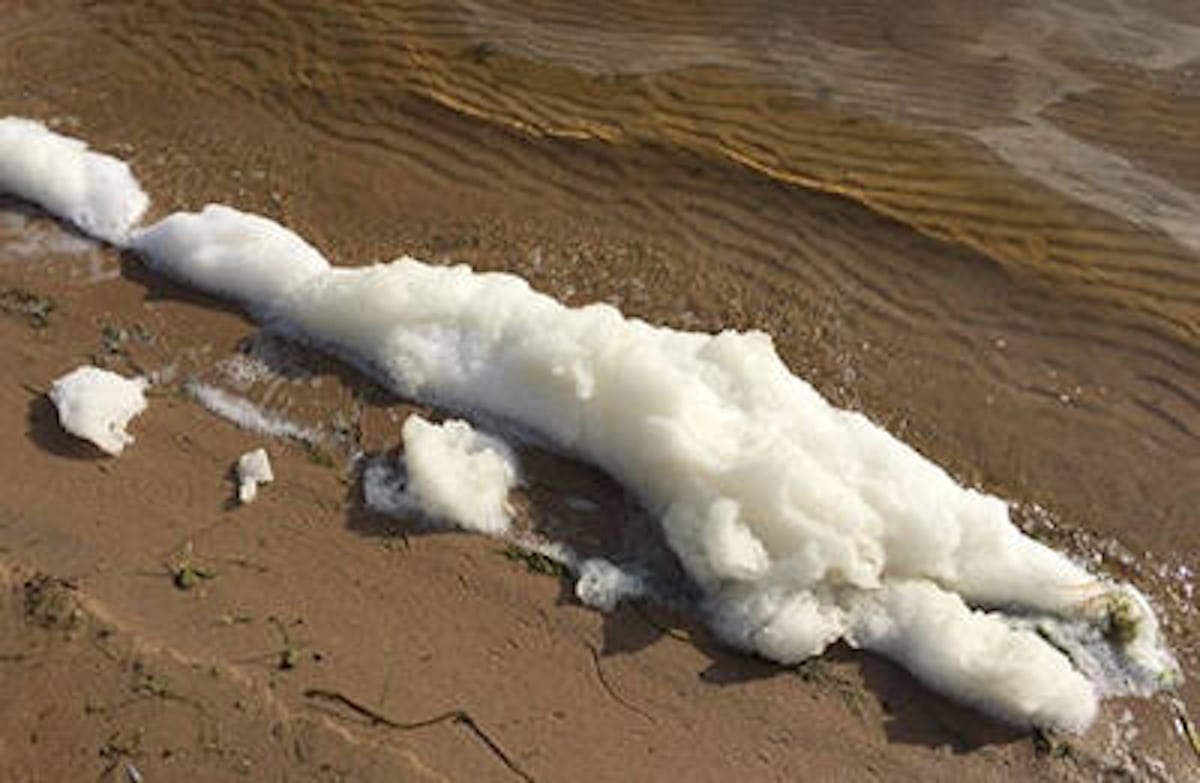Scientists Warn of Toxic PFAS Plume in Groundwater of Lake Michigan’s Green Bay

 Why you can trust us
Why you can trust us
Founded in 2005 as an Ohio-based environmental newspaper, EcoWatch is a digital platform dedicated to publishing quality, science-based content on environmental issues, causes, and solutions.
Researchers at University of Wisconsin–Madison have published a study of findings that show a toxic plume of per- and polyfluoroalkyl substances, also known as PFAS or forever chemicals, is moving into Green Bay of Lake Michigan through groundwater.
PFAS are often called forever chemicals because of their inability to break down in the environment, and these chemicals are found just about everywhere. They can be in food packaging, waterproof or stain-resistant products, and in firefighting foam.
The scientists traced this particular plume moving into Green Bay back to Tyco Fire Products via a PFAS fingerprinting technique and published their findings in the journal Environmental Science & Technology. Foam from the company’s training facilities in Marinette and Peshtigo has been found to contaminate local groundwater and waterways. The company tested firefighting foam outdoors from 1962 to 2017, but PFAS traced back to the facility has affected local communities for years, and the Wisconsin Department of Justice sued Tyco Fire Products in 2022 over PFAS contamination, Wisconsin Examiner reported.
Additionally, the team found PFAS in waterways near agricultural fields that could be present from treated biosolids used for fertilizing fields.
“Treated biosolids are commonly spread on fields all across Wisconsin,” Sarah Balgooyen, co-author of the study, said in a statement. “This information may impact how municipalities across Wisconsin and other states approach the use of biosolids as an agricultural fertilizer.”
Christy Remucal, associate professor of civil and environmental engineering, co-author of the report, told The Associated Press that the plume was about 2.49 miles wide based on water samples, and that the chemicals will be hard to contain and treat.
The study authors found 17 types of PFAS in Green Bay, and water samples from the shores of Marinette showed PFAS concentrations of 250 parts per trillion. The U.S. Environmental Protection Agency’s drinking water threshold for PFOS and PFOA, two types of PFAS, is far below that at 70 parts per trillion.
PFAS have been linked to negative health impacts in humans, including developmental effects and increased risk of certain types of cancer. The Center for PFAS Research at Michigan State University is also exploring how PFAS may impact fish in Lake Michigan and the other Great Lakes, all of which have been found to contain some levels of PFAS.
The scientists said the PFAS fingerprinting technique used to identify sources of the PFAS plume in Green Bay may help hold companies that pollute environments responsible for contaminating waterways.
Subscribe to get exclusive updates in our daily newsletter!
By signing up, you agree to the Terms of Use and Privacy Policy & to receive electronic communications from EcoWatch Media Group, which may include marketing promotions, advertisements and sponsored content.

 233k
233k  41k
41k  Subscribe
Subscribe 




